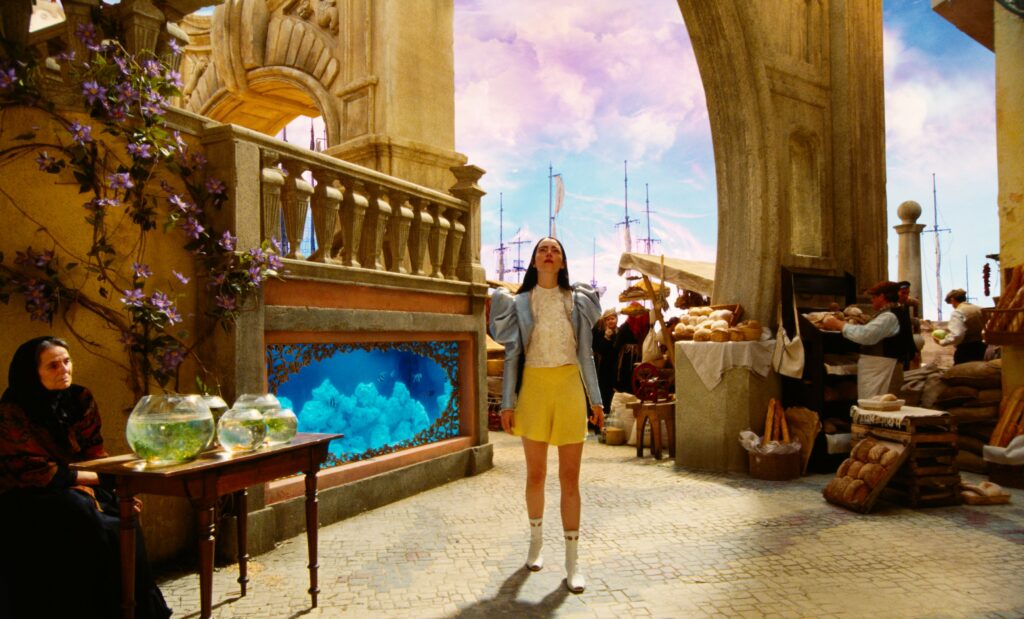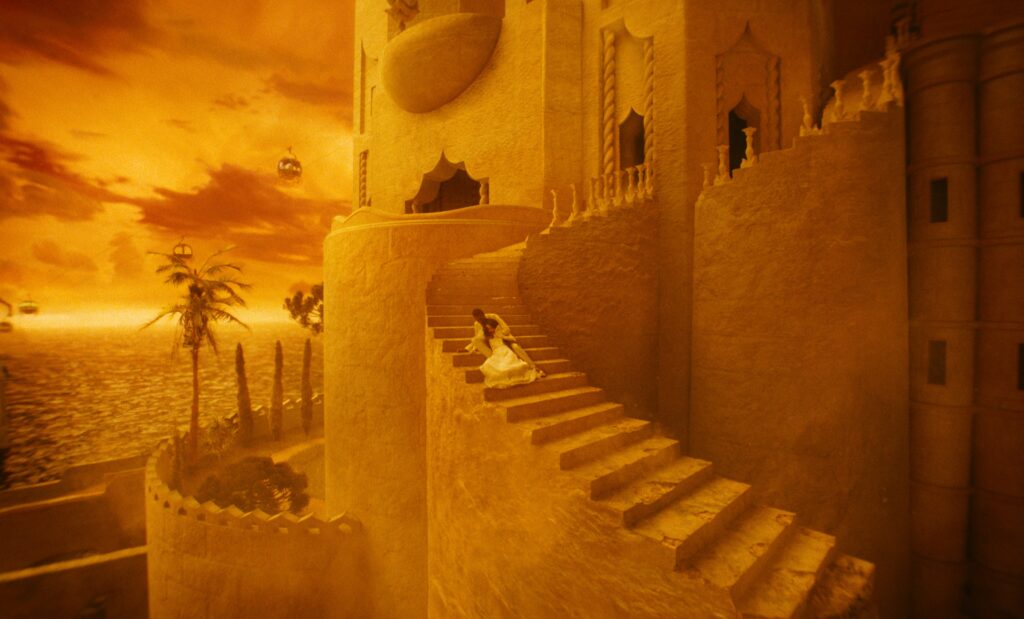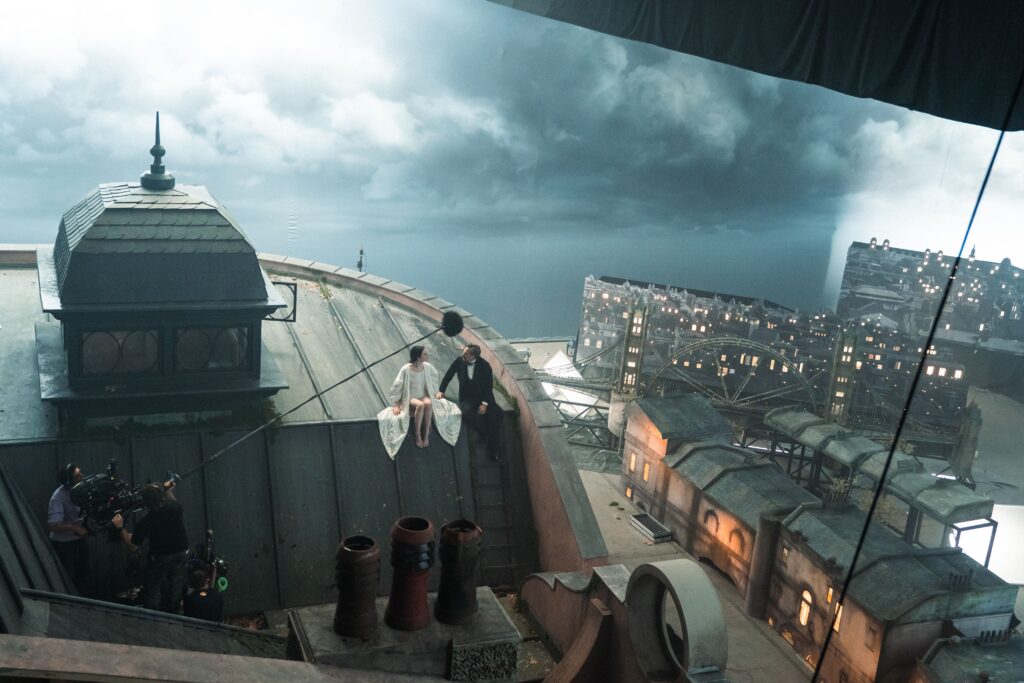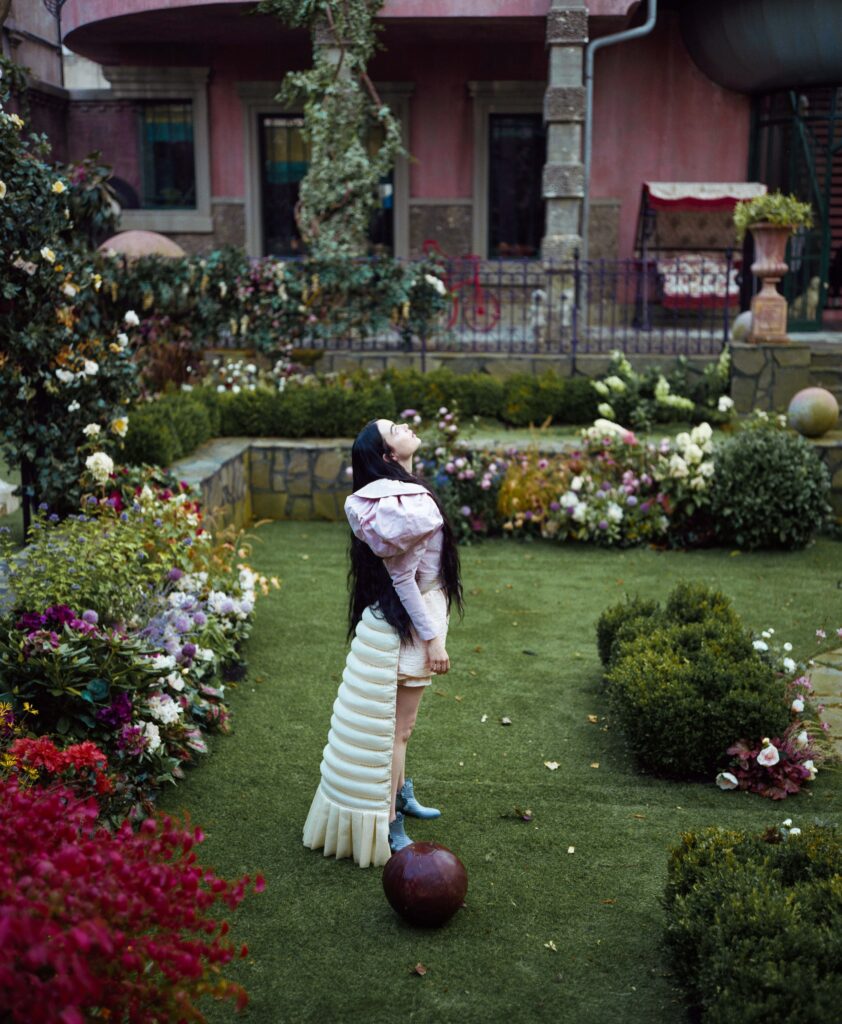The movie Poor Things, directed by Yorgos Lanthimos, gave the world a chuckle and a lot of food for thought this year, having won multiple Academy Awards for its art direction and actors. Adapted from the Scottish author Alasdair Gray’s 1992 novel of the same name, the movie follows the journey of Bella Baxter (Emma Stone) as she discovers life, sexuality, and philosophy, all while travelling around Europe.
The story can be compared to that of Mary Shelley’s Frankenstein, as Bella’s “creator,” Dr Godwin “God” Baxter (Willem Dafoe), brought Bella’s body back to life after a successful suicide attempt by exchanging her brain with that of a newborn. The result? A woman with a brain in the first stages of development but with an adult body. This coming-of-age journey follows Bella as she frees herself from the constraints of society and engages in amoral sexual experiences.


Bella sets off from London to Lisbon, from Alexandria to Paris, and back to London to start her life, following everything she’d learned. It’s quite hard to put a pin on the time frame of the era due to the scenarios and Bella’s perspectives on the world, but this is a mere detail that doesn’t matter much to the story. God raises Bella to be his to rule, and men all around her seem to want to lock her up and make her theirs, with no regard for her wants and needs, her dreams, or her curiosity.
As Bella develops over time, these men are left enraged and in anguish because they can’t control her, however, this doesn’t mean much to our heroine since, in her own words, “a life without freedom to choose is not worth having.” Such a strong character arch needed an art direction that could help the viewer understand what Bella is surrounded with and how she feels. The scenarios and many cities are all symbolic of Bella’s journey and what is to come.
The world in perspective
Lanthimos is known for his bold scenarios and camera angles (his fisheye lens is used extensively throughout the movie), and the world he created is presented from personal and spatial perspectives. In the director’s world, we can see Bella overlooking cities and people, watching beauty, misery, and rage, such as when Duncan Wedderburn (Mark Ruffallo) comically tries to get her attention from outside her Parisian balcony and when she listens in awe to a fado singer in Lisbon (the Portuguese Carminho).
“There needed to be a world created for Bella to inhabit, it couldn’t just be something realistic. We aimed to open the period and insert elements that allude to an era, but allow it to be more of a fairy tale or a metaphor for things. There are various elements that are either science fiction, anachronistic, or imaginary.”
Yorgos Lanthimos


Part of the perspective was also personal, as the world we see seems to be affected by Bella’s developmental stages. God’s house is traditionally Victorian and contemporary all the same, as the furniture and other elements seem to be almost realistic, but not quite. The piano room, for example, is richly decorated with velvet and rugs, art, and a wavy ceiling, but the camera angle is set as that of a security camera. Bella sees her home as a prison full of pretty and comfortable stuff where a maid cleans after her and God tries to give her everything she wants—except her freedom.
When she finally breaks free and sets off to discover the world, the cities also take the form of what she feels and believes at the time: Lisbon is seen as a bubbly city where Bella finds beauty everywhere and her curiosity can break free, Alexandria is dark and broken, Paris is mature and wide open, and London, in the end, is exactly what Bella wants for her future.
Bella’s world
London
The movie starts in a moody, steampunk-inspired, black-and-white London. The doctor’s house has a neo-classical skeleton but a myriad of design styles on the inside, making it almost one of God’s experiments, such as the animal with a chicken’s body and a pug’s head. The decoration is luxurious, and the house seems to have been adapted for Bella to feel cosy and safe, using upholstered walls and tufted floors in Bella’s bedroom to recreate a womb and porcelain plates and plastic wrap on the dining table to contain her mess.
The house is set within an Art Nouveau-inspired London where carriages are still driven by horses (except God’s) and where we can’t tell if we are in the Victorian period or a different world—here, any steampunk lover could cry of happiness.
Lisbon
The second act is centred in Lisbon, where the scenario shown is a bit different from the real city and where Bella starts her journey of discovery. Suddenly, the movie gains colour and Bella is introduced to a city bustling with restaurants, bars, music, dance, and pastéis de nata. The famous trams are seen soaring above the cityscape, like retro-future gondolas, and Bella starts discovering the city, her new-found independence from God, and her sexual experiences.
Here, her lover, Duncan, starts falling in love with Bella, or so he says, trying to control her when he finds her to be too untameable and curious. Duncan can’t deal with Bella’s sexual freedom and shares this with our heroine, who, in her innocence, doesn’t comprehend his apprehension and starts harbouring negative feelings towards him. Duncan soon decides that they must leave Lisbon since Bella is too wild for them to stay. He couldn’t let her discover life in such a free city, so he decided to go on a cruise ship towards Athens.
The cruise
Bella finds herself locked up once again, now in a prison of salty water. Her new prison is, however, the place where she breaks free from childlike wonder into the addiction of questioning everything and living in idealism. The interior of the cruise is pure art deco, from the colours to the furniture style, and the ocean is a 10-foot model (3 metres) set against an LED sky.
“The sets were epic in scale, we built composite structures that you could walk into, take your shoes off, and feel at home.”
James Price

Alexandria
The cruise ship stops at Alexandria, and Bella is hit with the harshness of reality: babies can be seen dead in the slums, and Bella understands that money, or its inexistence, is a big problem in society. Bella, in a half-Great Lighthouse, half-Tower of Babel type of building, falls to her feet in shock. This view seems to turn her idealistic worldview ironclad, leading her to decide to try and save what she can. Alexandria and its biblical and historical elements take on a symbolic position as a place for epiphany, as it is here that Bella truly sees the world, not only the pretty things she’s shown or that her money can buy.
Paris
Bella arrives in Paris with Duncan after donating all of his money to the poor (she gives it, however, to cruise workers who promise they’ll give every pound to the poor, showing that she will always believe in people). In Paris, she starts working as a prostitute in an Edgar Degas-inspired brothel, where she learns about socialism, about how she came to be, and about relationships between humans.
The Parisian brothel is painted in a mix of lavenders, blues, and putrid yellows, reminiscent of bruised flesh and decay. Here, she decides she wants to follow in God’s footsteps, who is now dying in London. When she learns about this, Bella flees from beautiful Paris, from the dark brothel with old furniture that had been, for sure, once beautiful and visits God, happy to be back home.
Back home
When home, Bella eventually meets her old husband (or the husband of the woman she once was) and, aching to know more about her past life, decides to join him in her old home, where she discovers a life full of cruelty and unhappiness. The architecture of this new estate is dark and void of joy, as the gardens have barely any plants, the corridors have big red marks on the walls and floors that seem to resemble blood, and darkness seems to rule the space.
Bella quickly decides enough is enough, deciding to return home and say a final goodbye to God. In the end, Bella can be seen accompanied by everyone who matters to her in a blooming garden, a symbol of her new life and freedom.

Architecture with meaning
Sex, for Bella, is amoral since she was never taught how to abide by society’s rules, how to be polite, or how to control herself. Most of all, even if we can’t tell which era the movie is from, we know that women seem to have less freedom than men, and Bella has a hard time accepting with this.
The architecture seen throughout the movie doesn’t seem to follow any norms, freely combining disparate meanings in the same way her juvenile dialect invents new phrases like “furious jumping”, her initial definition of sex. Architecture and the cities become, in her strange and innocent world, a playground where adventure and new experiences can be found around every corner.
The director and the cinematographer, Robbie Ryan, can capture these architectural settings by using wide angles, allowing viewers to take in the scenery from the same perspective as Bella’s. Through her eyes, her journey seems whimsical and wholesome, perhaps much different than what we would experience if the movie had been crafted from the eyes of the men who surround her and wish to bend her will to theirs.









